S. Booma
Assistant Nursing Superintendent, Kauvery Hospital, Trichy-Cantonment, India
*Correspondence: booma@kauveryhospital.com
Successful discharge of a four year old baby with life threatening gas gangrene and compartment syndrome
Case Presentation
A 4-years-old child was brought on 05 Apr 19, with complaints of:
(a). Fever for 5 days, high grade and intermittent in nature
(b). Swelling of left thigh, rapidly progressing in a day
(c). Discolouration of left thigh
(d). Vomiting (+), not blood stained
H/o IM injection in Lt gluteal region
No Loose stools or dysuria
No Cough or Headache
No Bleeding manifestations
Initially treated in nearby hospital, and treated with IV fluids and antibiotics.
Past history: Nil Significant
Clinical Findings
Weight: 15 kg, Child irritable, febrile, pallor, Tachypnoeic
Pulse: low volume, proximal pulses weak, distal pulses absent
Temp: 101.2°F
HR: 195/mt
RR: 60/mt
SpO2: Not recordable due to shock
BP: 50/100 mmHg
Capillary Refilling Time (CRT): > 3 s
Systemic Examination
CVS S1S2 (+), No murmur
RS: Breath sounds vesicular, no wheeze, no added sounds, SCR (+)
Abdomen: Soft, Liver below 2.5 cm
CNS: No focal neurological deficit
Local Examination
Left Lower Limb
(a). Diffuse Swelling present over left thigh.
(b). Warmth over left gluteal region.
(c). Discolouration present.
Surgery notes: 06 Apr 19
Decompression fasciotomy of left thigh & gluteal region, with excision of necrotic patch on back of left thigh & decompression fasciotomy of left leg .
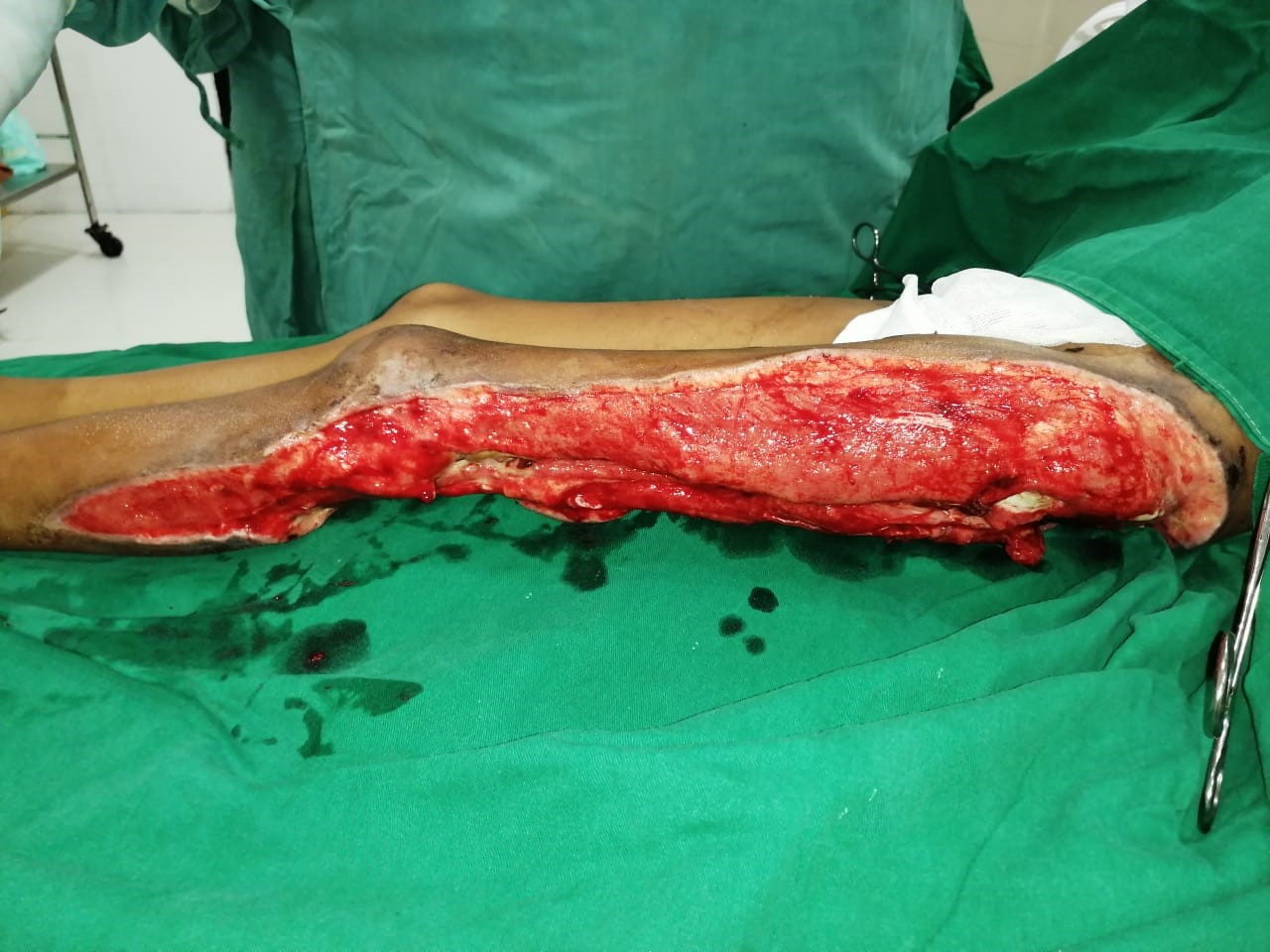
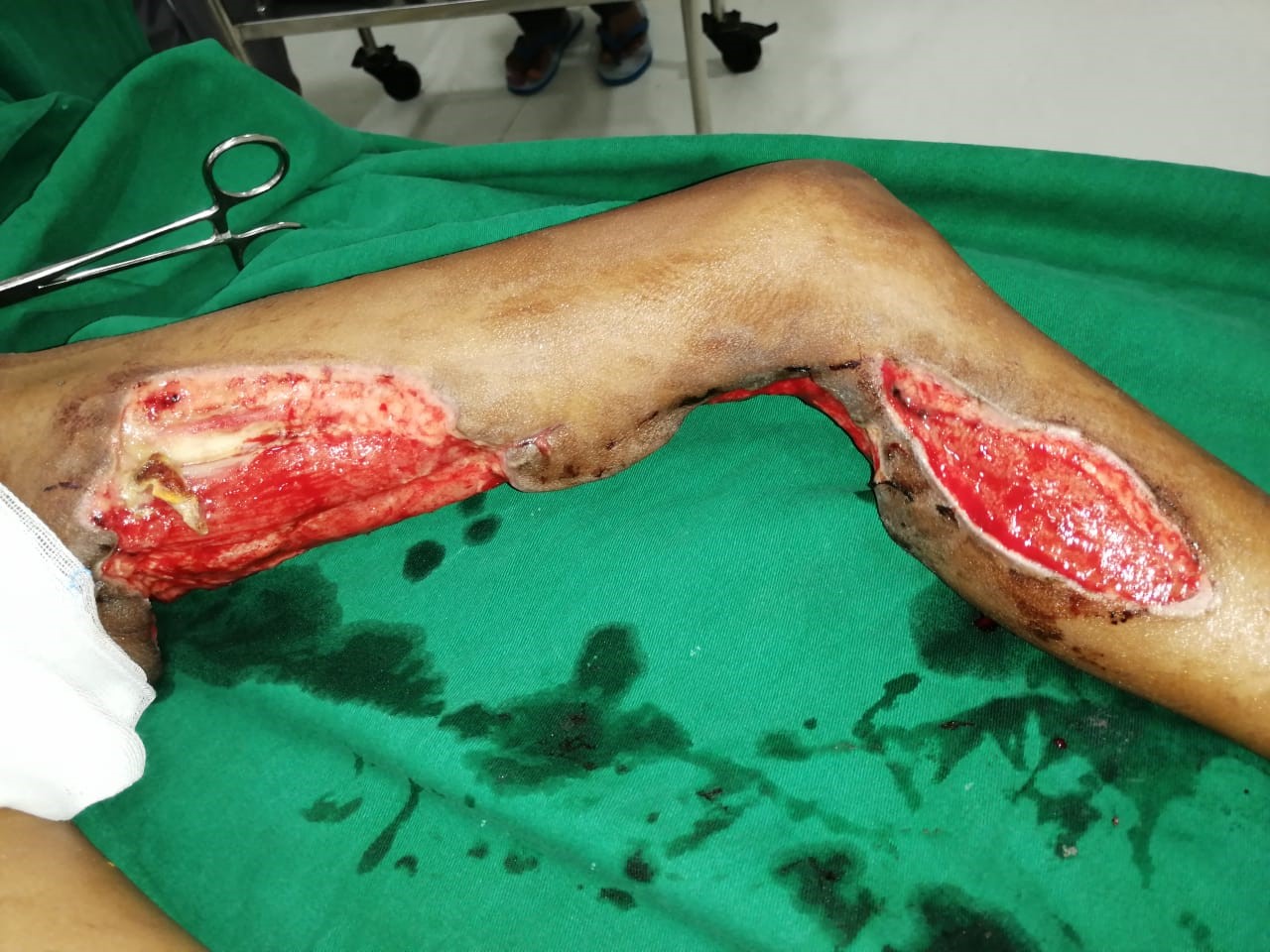
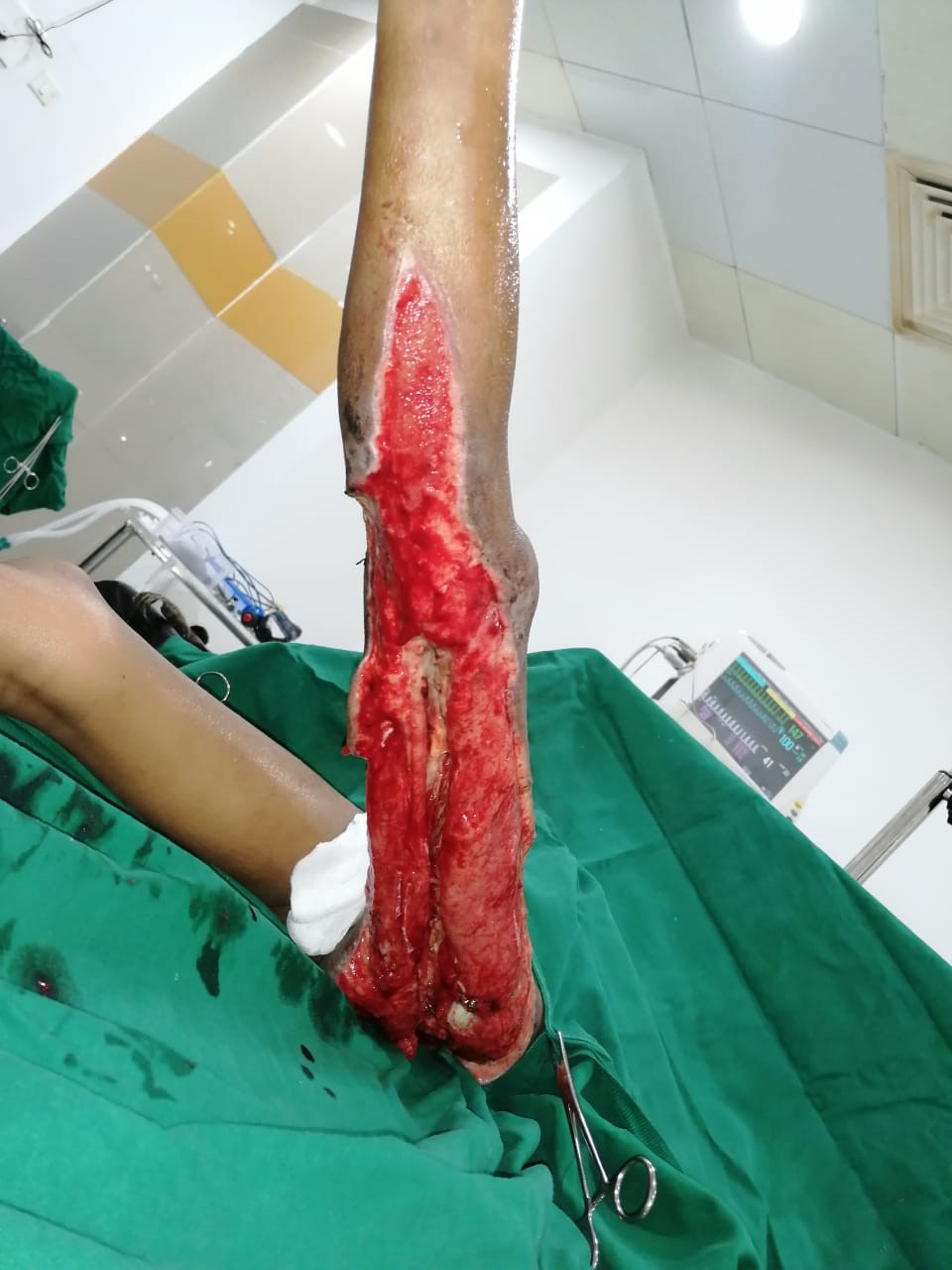
8.4.19 /10.4.19/10.4.19/ 12.4.19/ 16.4.19
Debridement & wound wash done under general anesthesia
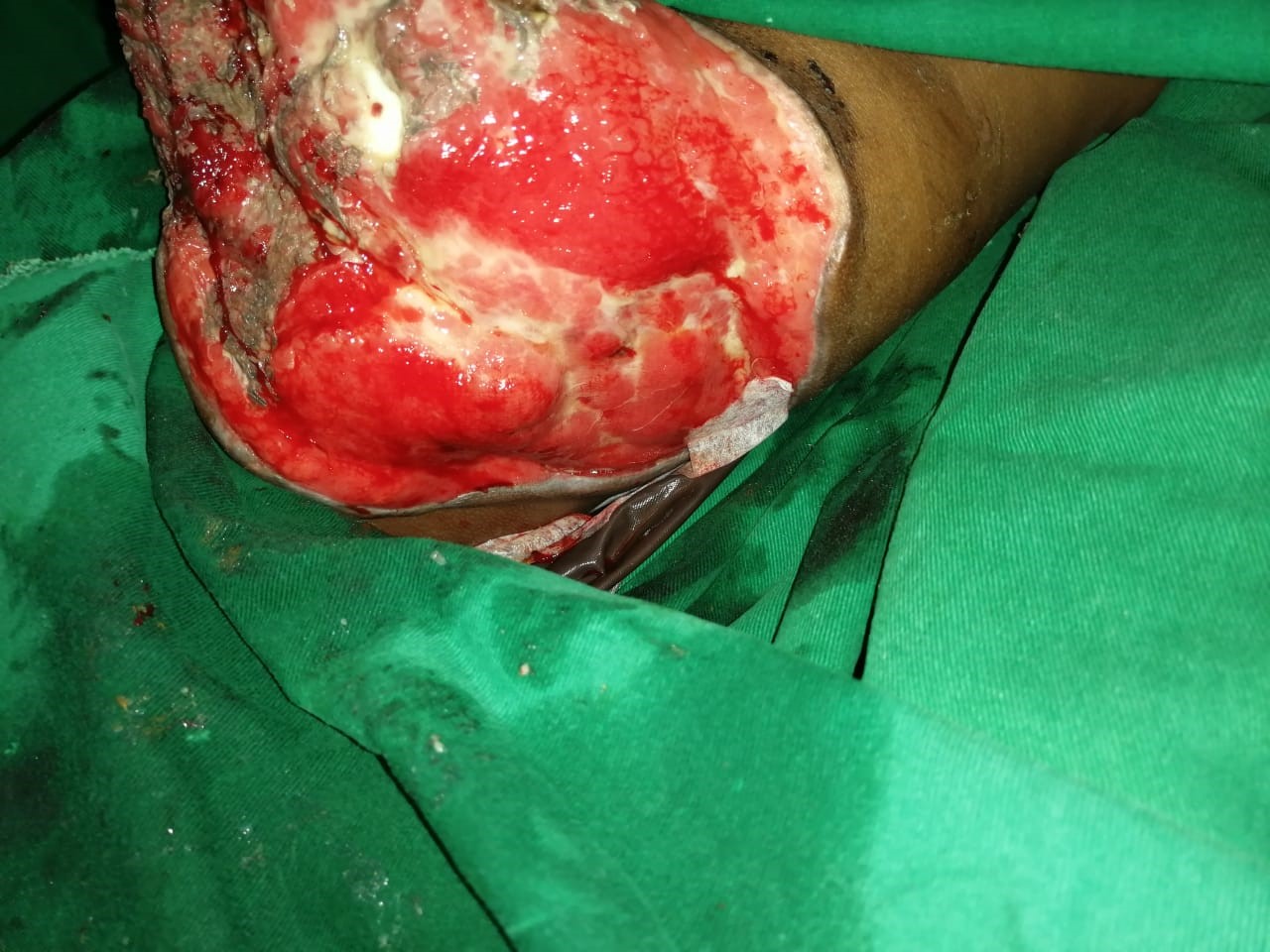
On 27.04.19:
Scrapping & SSG cover done under IV sedation & Spinal anesthesia
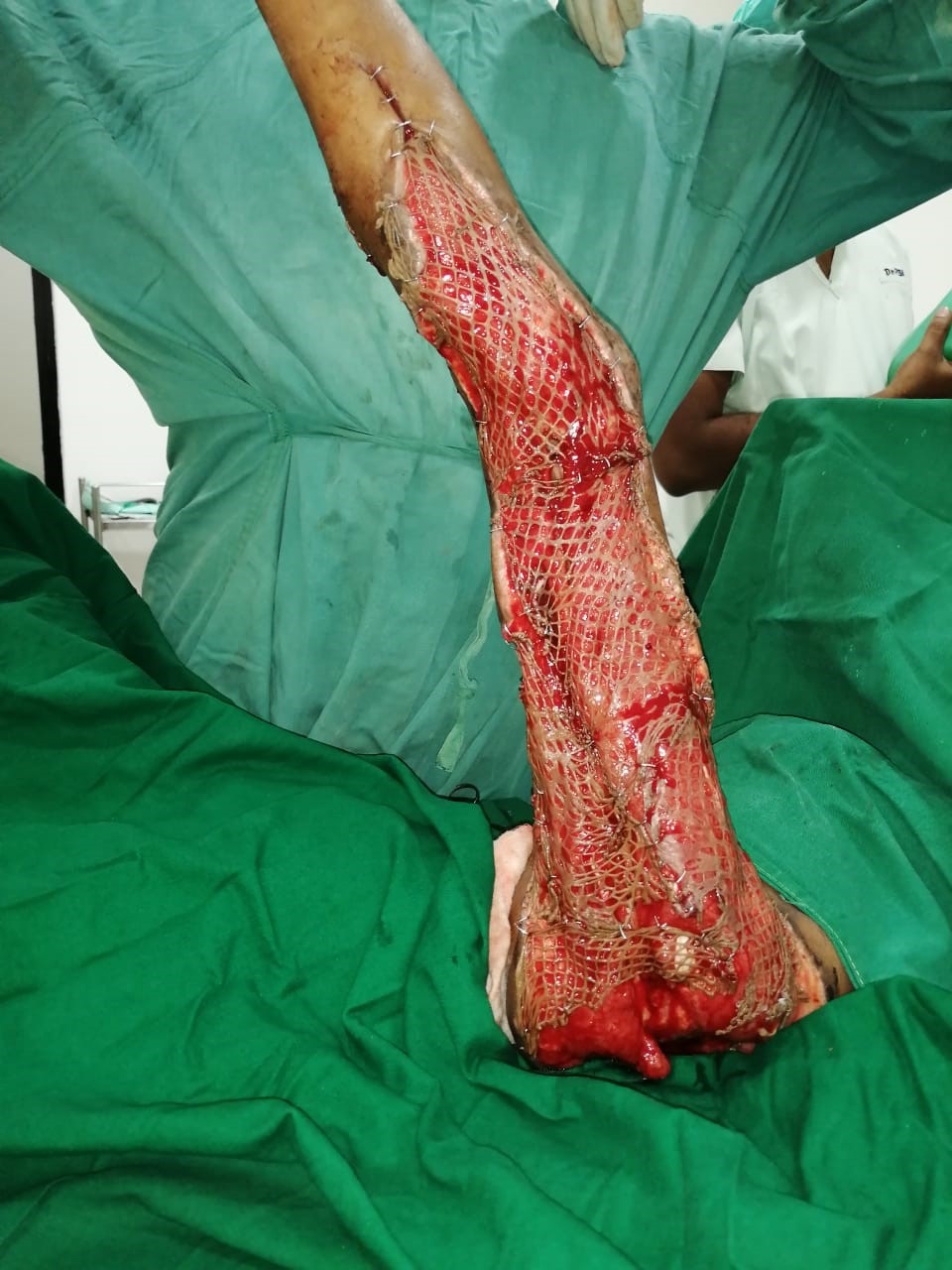
On 30.04.19 / 03.05.19:
Change of dressing done under IV Sedation
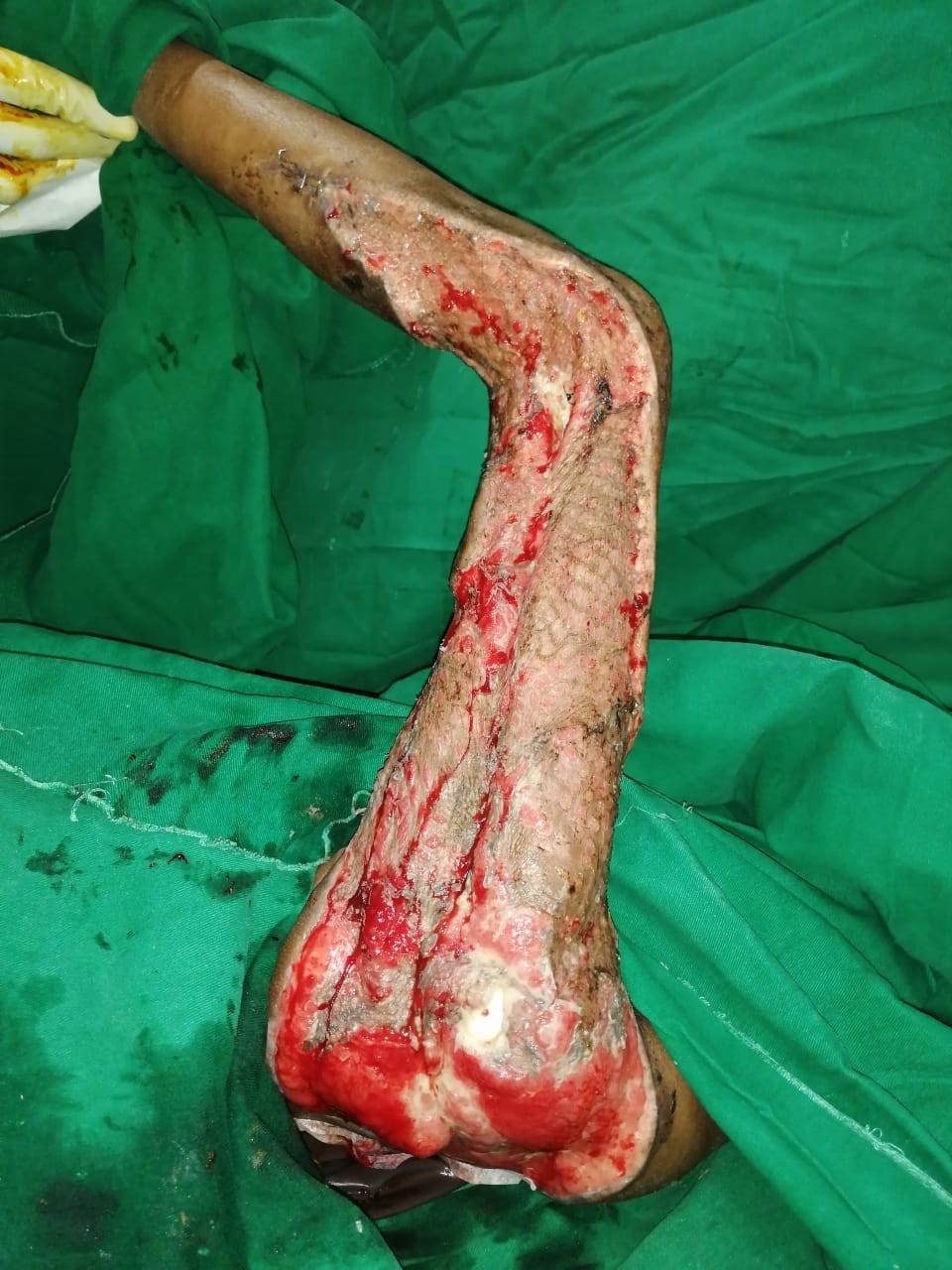
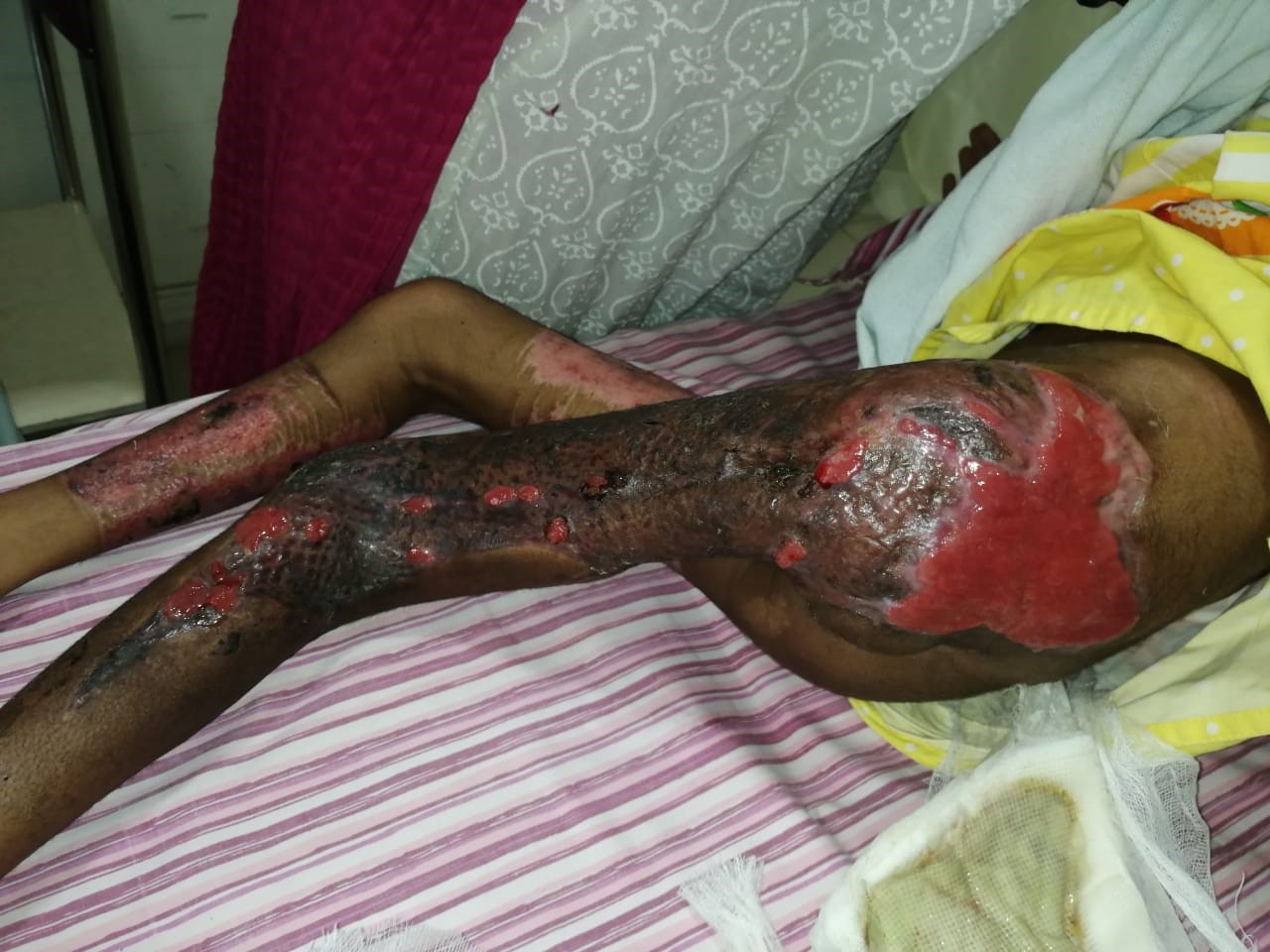

Course in hospital
(1) On admission, Left lower limb cellulitis with septic shock was initially considered. She was started on oxygen, IV Fluid bolus, Inotropes, IV antibiotics and shifted to PICU for further management.
(2) Her vitals were unstable. Fluid refractory shock was suspected, hence inotropes dose was increased, and with high dose steroids
(3) Pediatric surgeon and plastic surgeon opinions were sought. Left thigh and gluteal region compartment syndrome was clinically suspected.
(4) X-ray of left lower limb showed diffuse gas shadow suggestive of gas gangrene. Since child was hemodynamically unstable, she was electively intubated.
(5) In view of left thigh compartment syndrome with necrotic patches at postero lateral aspect extending to gluteal region, decompression fasciotomy of left thigh and gluteal region with excision of necrotic patch were done.
(6) As there was further progression of gangrene and involvement of medial and lateral compartment of left leg, emergency fasciotomy was done.
(7) Her blood investigations showed mild leucopenia with elevated CRP. SGOT and SGPT. INR was elevated. In view of coagulopathy 1 unit of fresh frozen plasma was transfused. CPK-MB was high, suggestive of Rhabdomyolysis, so forced alkaline diuresis was done.
(8) Frequent wound debridement and dressing done under sterile aseptic precaution.
(9) In view of prolonged ventilator support, elective tracheostomy was done.
(10) Pus cultures showed Klebsiella pneumoniae, Escherichia coli, Acinetobacter species, Enterococcus species. Blood culture grew Stenotropononas maltophilia. IV antibiotics were continued and upgraded according to sensitivity pattern.
(11) Vacuum assisted dressing done on day 19 of admission .
(12) She was started on high protein diet and Human Albumin infusion continued for 7 days.
(13) VAC dressing removed after 7 days. Wound appeared healthy.
(14) Split skin graft was done after 2 days of VAC dressing removal. Alternate day dressing was done.
(15) On local examination,wound was healthy. Child improved well and tolerated oral feeds.
(16) Under sterile aseptic precaution, Tracheostomy was decanulated on day 34 of admission. She was able to vocalize and tolerate oral diet well.
(17) She was made to mobilize and discharged.
Discussion
Gas Gangrene
Gangrene is death of body tissue due to a lack of blood flow or a serious bacterial infection. Gangrene commonly affects the arms and legs, including the toes and fingers. It can also occur in the muscles and in organs inside the body, such as the gallbladder.
Symptoms of gas gangrene
(a). Changes in skin color – ranging from pale grey to blue, purple, black, bronze or red
(b). Swelling
(c). Blisters
(d). Sudden, severe pain followed by a feeling of numbness
(e). A foul-smelling discharge leaking from a sore
(f). Thin, shiny skin, or skin without hair
(g). Skin that feels cool or cold to the touch
Compartment syndrome
Compartment syndrome is a painful condition, with muscle pressure reaching dangerous levels. It occurs when pressure rises in and around muscles. The pressure is painful and can be dangerous. Compartment syndrome can limit the flow of blood, oxygen and nutrients to muscles and nerves. It can cause serious damage and possible death.
Compartment syndrome occurs most often in the lower leg. But it can also impact other parts of the leg, as well as the feet, arms, hands, abdomen (belly) and buttocks.
Types of compartment syndrome
(a). Acute compartment syndrome
It is usually caused by a bad injury and is a medical emergency. Without treatment, acute compartment syndrome can permanently damage muscles. It can also lead to disability, paralysis or even death.
(b). Chronic compartment syndrome
It is usually isn’t an emergency. It’s often caused by physical exertion, such as intense exercise. Healthcare providers sometimes call it exertional compartment syndrome for that reason.
Symptoms of compartment syndrome
(1) Bulging or visible swelling of the muscle.
(2) Feeling like the muscle is fuller, swollen or somehow larger than normal.
(3) Numbness.
(4) Muscle pain that is stronger than you’d expect from the injury.
(5) Severe pain when you stretches the muscle.
(6) Tightness in the muscle.
(7) Tingling or burning sensation in or under your skin, called paresthesias.
Treatment for acute compartment syndrome
Acute compartment syndrome must get immediate treatment. A surgeon will perform an operation called a fasciotomy. To relieve pressure, the surgeon makes an incision (cut) through the skin and the fascia (compartment cover).
After the swelling and pressure go away, the surgeon will close the incision. Sometimes that can’t happen right away. The surgeon may do a skin graft, taking skin from another area of your body to put over the incision.
Outcome
Baby discharged with the support of walker after 41 days of hospitalisation without bedsore and iatrogenic injury.

Ms. S. Booma
Assistant Nursing Superintendent
